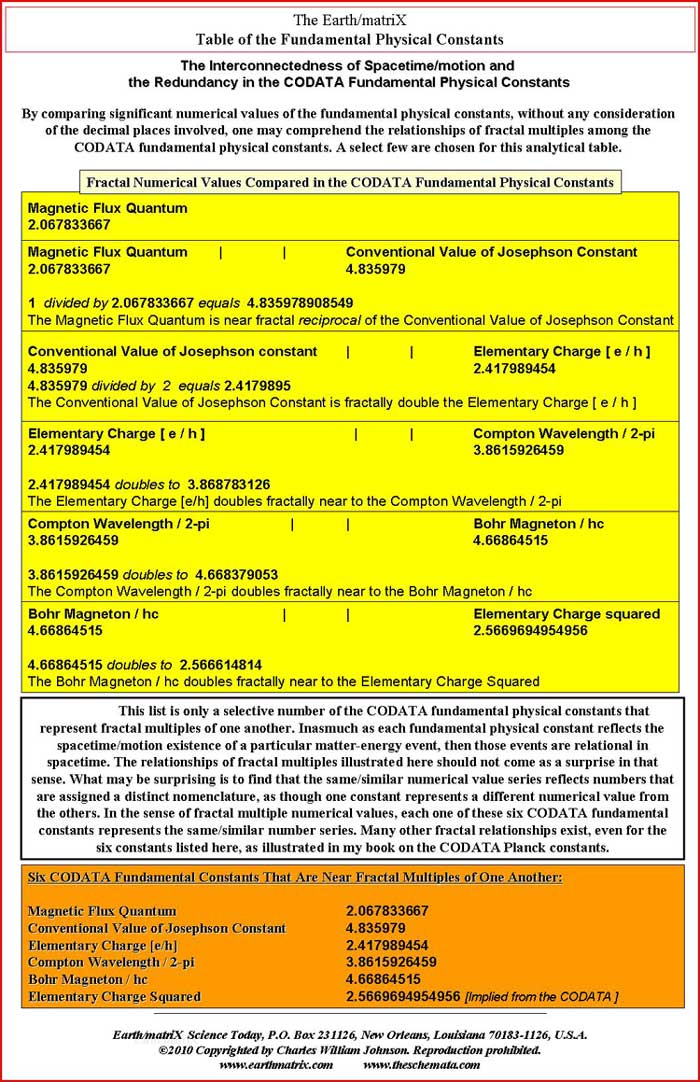
Dedicated to the preservation of human knowledge in the arts and sciences,
and to the advancement of human survival and to that of our planet in a world threatened by our own development.
|
|
|
The Earth/matriX Tables of Planck Constants by Charles William Johnson Table IV
|
||||||||||||||||||||||||||||||||||||||||||||
|
of the Elements: The correct placement of the elements on the periodic table concerns the search for patterns within the characteristics and properties of the elements and their atoms. |
||||||||
|
The Significance of the 1.36c | 1.366c Fractal Units for the Electron in an Atom. (pdf) |
||||||||
|
Maximum Number of Electrons in Shells of Atoms: The 1.3611111 Ratio. (pdf) |
||||||||
|
The Temperature Scale and the Universal Constant for Particle Mass. |
||||||||
|
|
||||||||
|
|
||||||||
|
|
||||||||
|
|
||||||||
|
||||||||
|
|
||||||||
|
|
||||||||
|
The Solar Constants of the Planets The Pluto / Sun Relationship and the Thermodynamic Temperature Scale. |
||||||||
|
|



